Participants will develop a deep understanding of how five research-based strategies (ask yourself questions, sentence frames and starters, annotation, the Four R’s, and turn-and-talks) can be used to help students with learning disabilities develop mathematical thinking. They will learn about six accessibility areas (conceptual processing, visual-spatial processing, language, attention, organization, and memory) math learners must use when doing mathematics. They will see how the essential strategies support students as they work in each of the accessibility areas by engaging in an instructional routine designed to develop mathematical thinking. Participants coalesce their learnings as they apply the course ideas to draft IEP goals that focus on students’ mathematical thinking.
Asynchronous from
Oct 6 - Nov 30, 2021
2 recorded synchronous sessions, Oct 27th and Nov 9th 7-8 pm Eastern
More Information

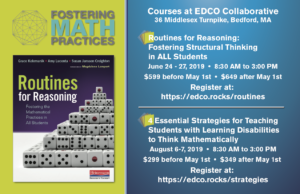
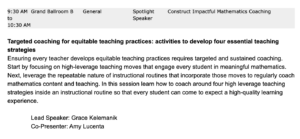
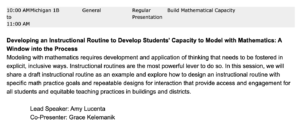
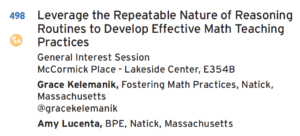
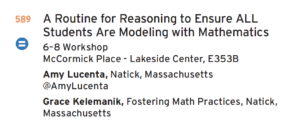
Comments are closed.
I conducted this task with a class of fifth graders as the first task for the Capturing Quantities routine. Fifth grade teachers have expressed frustration with kids jumping right to solving the problem, so I left the question off initially so that we could really focus on quantities and relationships. I started with this task because I thought the math would be easily accessible and we could focus on the structure of the routine. I was mostly right about that, though surprisingly we took several minutes to talk about the tax. Some students were convinced that it was critical information to have. Through a great discussion via student’s diagrams, students were able to come to consensus that because both prices included tax, that it didn’t matter what the tax was. I anticipated that may come up but had convinced myself that they would automatically see that the amount of tax was not an important quantity. The fact that it was included in both prices did turn out to be a relevant relationship to our discussion! I asked students to suggest questions that could be answered with this information, then revealed the actual question and had them complete the problem. It was a great introduction to the routine!